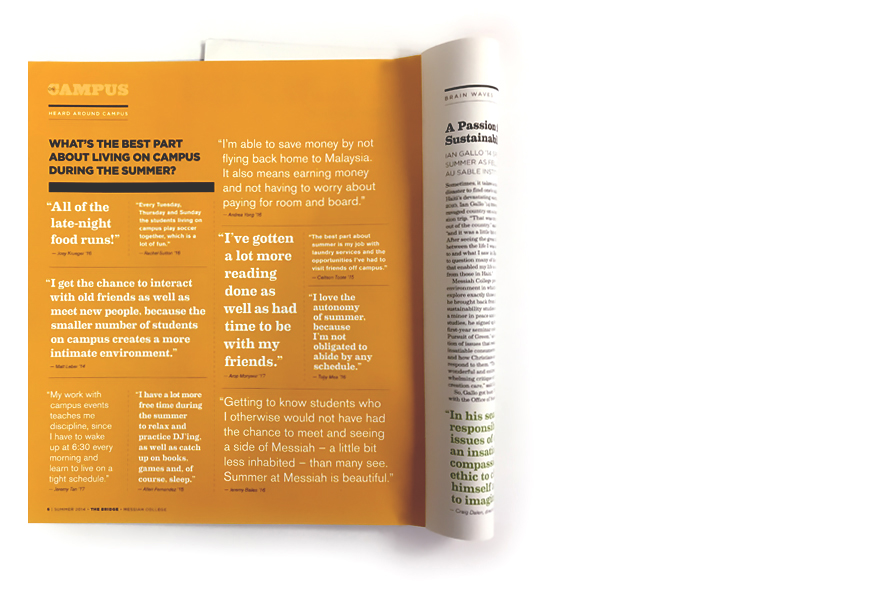College alumni magazines must appeal to a wide spectrum of readers – recent grads, older alumni, administrators, faculty, donors, prospective students, and more. Special sections or departments are often created to appeal to a specific group or to discuss recurring topics of interest.
By The Numbers
Everybody loves “infographics” as a quick way to visualize a story. Sometimes numbers can tell the story just as effectively, with the help of a few well-chosen words. Reports and research drive data-rich graphics for Johns Hopkins Carey Business, and departmental success statistics generate a recurring typographic design for Hopkins Medicine’s Division of Rheumatology. Illustrations by Scott Roberts.
Culling words of wisdom from successful alums or mining the school’s archives are just two ways to occupy the last page.
Social Media
Creative ways to visualize social media in a print environment: Instagram photos for St. John’s College’s magazine, and survey responses for Messiah College’s The Bridge.
Featuring Faculty
Two ways to capture the voices of an institution: a short “think-piece” on faculty research (for Carey Business School), and a brief profile paired with a great photo (for Hopkins Medicine’s Division of Rheumatology). Illustration by Edmon de Haro; photo by Howard Korn.
Final Words
A recurring department at the end of a magazine gives readers something fun to anticipate with every issue. Culling words of wisdom from successful alums (in Carey Business) or mining the school’s archives (in St. Mary’s College of Maryland’s Mulberry Tree magazine) are just two ways to occupy the last page.
Read earlier case studies from our Editorial series:
• Magazines: Making Covers Memorable
• Magazines: First Impressions
• Magazines: Designing a Feature Story
Want to be notified when additional case studies in this series are posted?
Subscribe here to receive emails from us.









